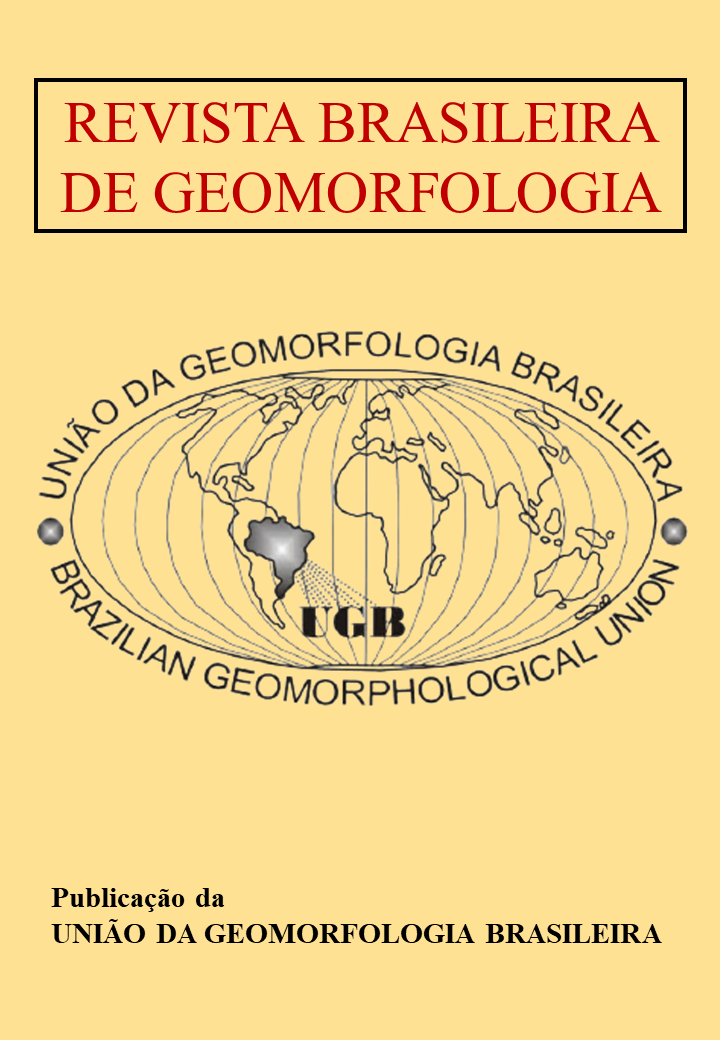Mapping and identification of areas critical to linear water erosion: the case of the Cerrado Biome in the State of Goiás, Brazil
DOI:
https://doi.org/10.20502/rbgeomorfologia.v24i00.2373Keywords:
gullies, mapping and isodensity of erosion focuses, critical areasAbstract
The Brazilian Cerrado exhibits linear water erosive features of medium to large scale, characterized by a heterogeneous spatial distribution. In the Central-Southern region of the Cerrado, studies on linear erosion are limited, primarily at the local and small watershed scales, yet they indicate an escalation of the issue linked to deforestation. This article proposes a methodology for mapping medium to large-scale linear water erosive focuses and identifying critical areas, specifically applied to the states of Goiás and the Federal District. To achieve this, remote sensing techniques were employed on high-resolution satellite images to map erosive focuses, followed by identification of critical areas by concentration of focuses through isodensity analysis, corresponding to critical areas. The results highlight the Southwest region of Goiás as the largest critical area in the state. This region is highly susceptible to erosion, characterized by flattened reliefs supported by sandstones and sandy soils, predominantly used for extensive pasture. The generated material can inform public policies aimed at erosion control in the Cerrado.
Downloads
Downloads
Published
How to Cite
Issue
Section
License

This work is licensed under a Creative Commons Attribution-NonCommercial 4.0 International License.
Author (s) retain copyright and grant the journal right of first publication with the work simultaneously licensed under the Creative Commons Attribution License that allows sharing the work with recognition of its initial publication in this journal.








